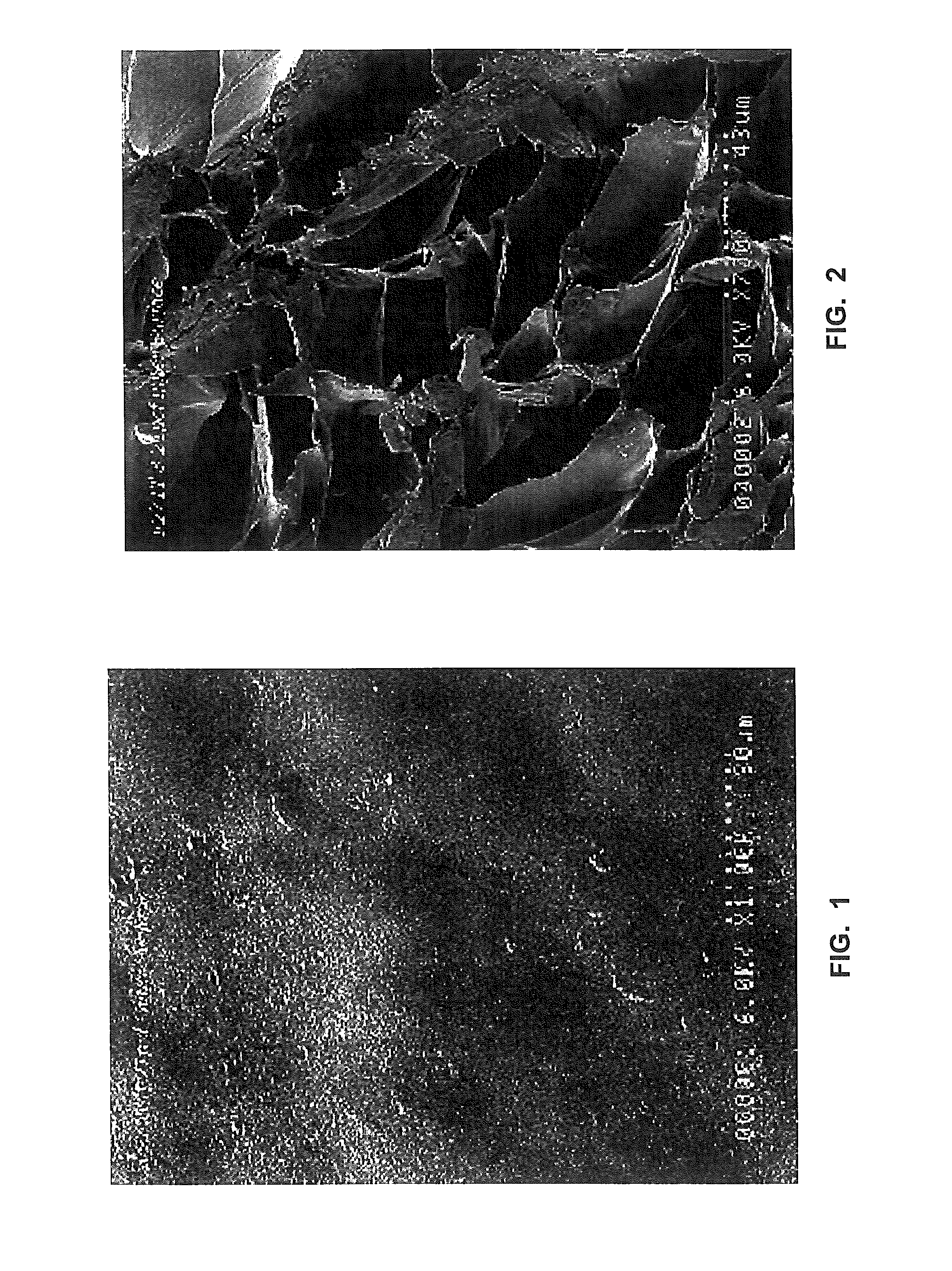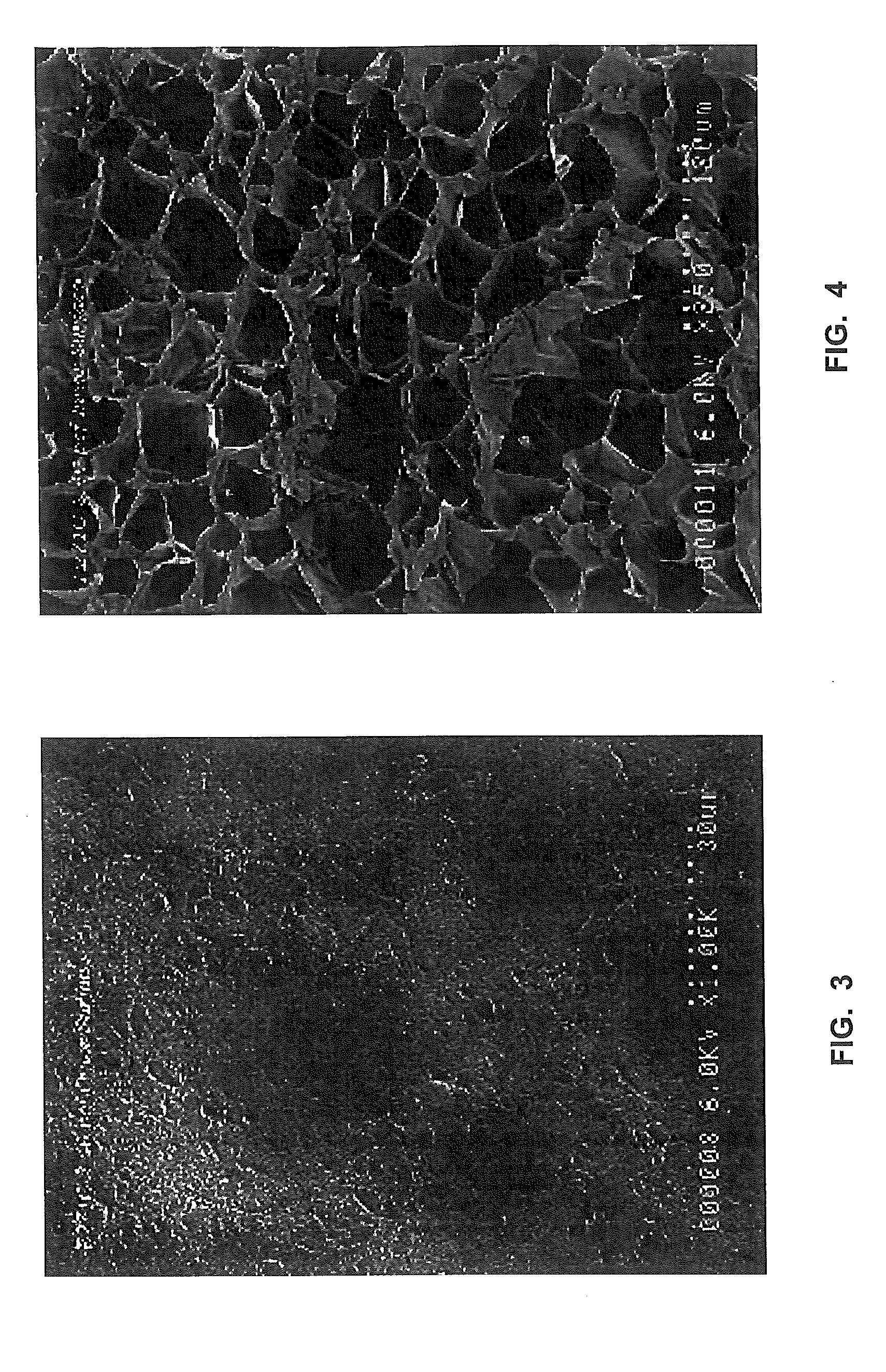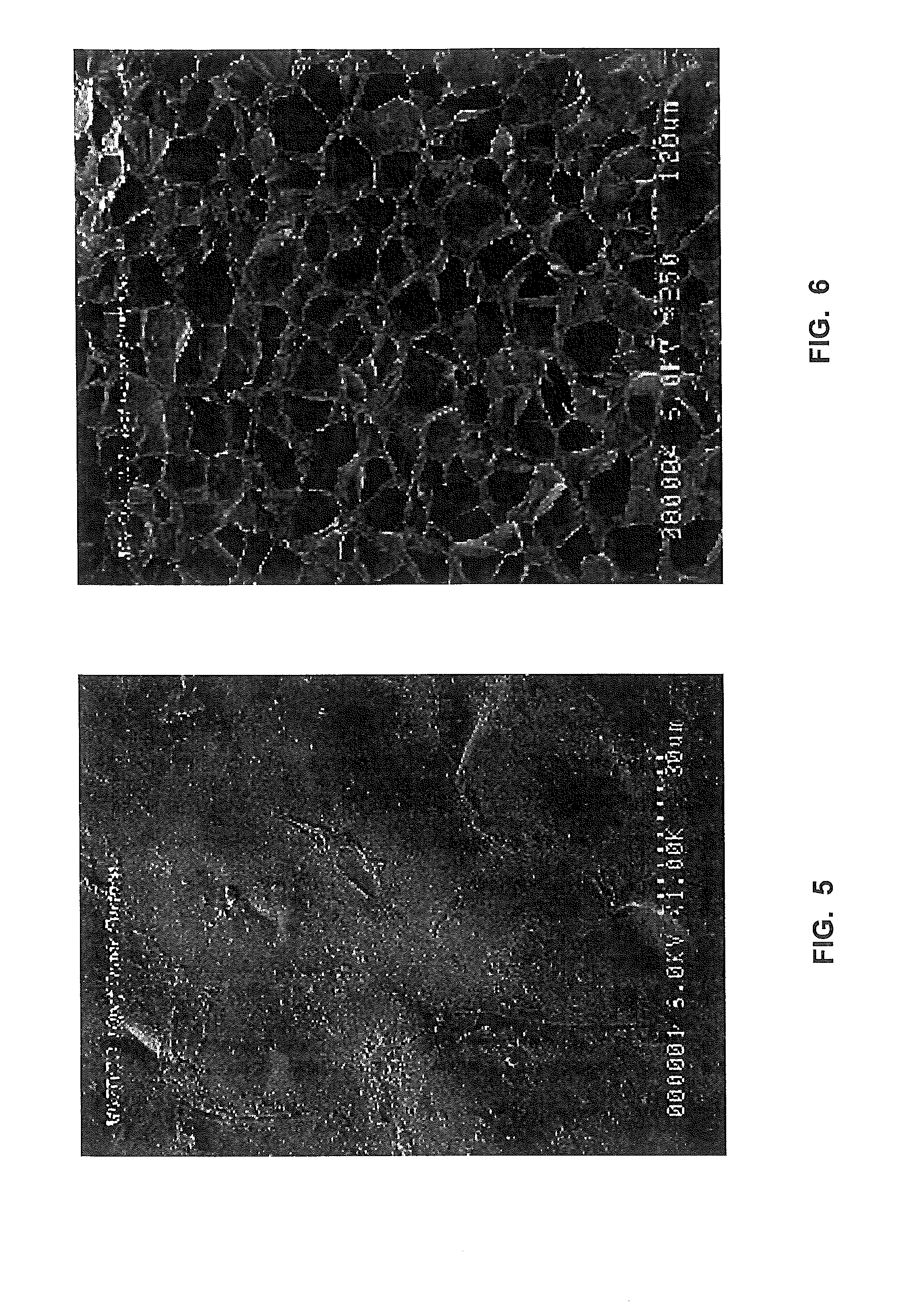Durable concrete compositions
a technology of concrete compositions and compositions, applied in the direction of climate sustainability, solid waste management, sustainable waste treatment, etc., can solve the problems of significant internal cracking of cement matrix and/or concrete surface, inconsistencies in spacing factors, and air entrainment technique, etc., to improve the durability of concrete formulations.
- Summary
- Abstract
- Description
- Claims
- Application Information
AI Technical Summary
Benefits of technology
Problems solved by technology
Method used
Image
Examples
example 1
[0206]Polystyrene in unexpanded bead form (M97BC—0.65 mm, F271T—0.4 mm, and F271M—0.33 mm) was pre-expanded into EPS foam (prepuff) particles of varying densities as shown in the table below.
Prepuff ParticleBeadBulkBeadMeanDensity,StandardTypeSize, μmlb / ft3Mean Size, μmdeviation, μmF271M3302.32902144F271M3303.1082480F271M3304.19725103F271T4002.401027176F271T4003.691054137F271T4004.57851141M97BC6502.541705704M97BC6503.291474587M97BC6505.271487584
[0207]The data show that the prepuff particle size generally varies inversely with the expanded density of the material.
example 2
[0208]Prepuff from F271T bead expanded to 1.2 lb / ft3, F271C bead expanded to 1.3 lb / ft3 and M97BC bead expanded to 1.5 lb / ft3 were evaluated using scanning electron microscopy (SEM). The surface and inner cells of each are shown in FIGS. 1 and 2 (F271T), 3 and 4 (F271C), and 5 and 6 (M97BC) respectively.
[0209]As shown in FIGS. 1, 3 and 5, the external structure of the prepuff particles was generally spherical in shape having a continuous surface outer surface or skin. As shown in FIGS. 2, 4 and 6, the internal cellular structure of the prepuff samples resembles a honeycomb-type structure.
[0210]The size of the prepuff particles was also measured using SEM, the results are shown in the table below.
T prepuffC prepuffBC prepuff(microns)(1.2 pcf)(1.3 pcf)(1.5 pcf)Outer diameter121613601797Internal cell size42.752.155.9Internal cell wall0.420.340.24Cell wall / cell0.00980.00650.0043sizeC prepuffBC prepuff(3.4 pcf)(3.1 pcf)Outer diameter—11331294Internal cell size—38.231.3Internal cell wall—...
example 3
[0215]Polystyrene in unexpanded bead form (0.65 mm) was pre-expanded into prepuff particles having various densities as shown in the table below. The prepuff particles were formulated into concrete formulations in a 3.5 cubic foot drum mixer, containing the components shown in the table below.
Sample ASample BPrepuff Particle Bulk3.95.2Density (lb / ft3)Portland Cement, wt. % 46 (21.5)45.6 (21.4)(vol. %)Water, wt. % (vol. %)16.1 (22.4) 16 (22.3)Prepuff, wt. % (vol. %) 2.3 (37.3) 3 (37.5)Sand, wt. % (vol. %)35.6 (18.8)35.4 (18.7)
[0216]The following data table numerically depicts the relationship between prepuff density and concrete strength at a constant concrete density.
BeadPrepuff ParticleConcreteMean Size,Bulk Density,Density,7-day Compressiveμmlb / ft3lb / ft3Strength, psiSample A6503.985.31448Sample B6505.284.31634
[0217]The data show that as prepuff particle density in the concrete formulation increases at constant concrete density, the compressive strength of the concrete increases...
PUM
| Property | Measurement | Unit |
|---|---|---|
| density | aaaaa | aaaaa |
| average particle diameter | aaaaa | aaaaa |
| aspect ratio | aaaaa | aaaaa |
Abstract
Description
Claims
Application Information
 Login to View More
Login to View More - R&D
- Intellectual Property
- Life Sciences
- Materials
- Tech Scout
- Unparalleled Data Quality
- Higher Quality Content
- 60% Fewer Hallucinations
Browse by: Latest US Patents, China's latest patents, Technical Efficacy Thesaurus, Application Domain, Technology Topic, Popular Technical Reports.
© 2025 PatSnap. All rights reserved.Legal|Privacy policy|Modern Slavery Act Transparency Statement|Sitemap|About US| Contact US: help@patsnap.com



